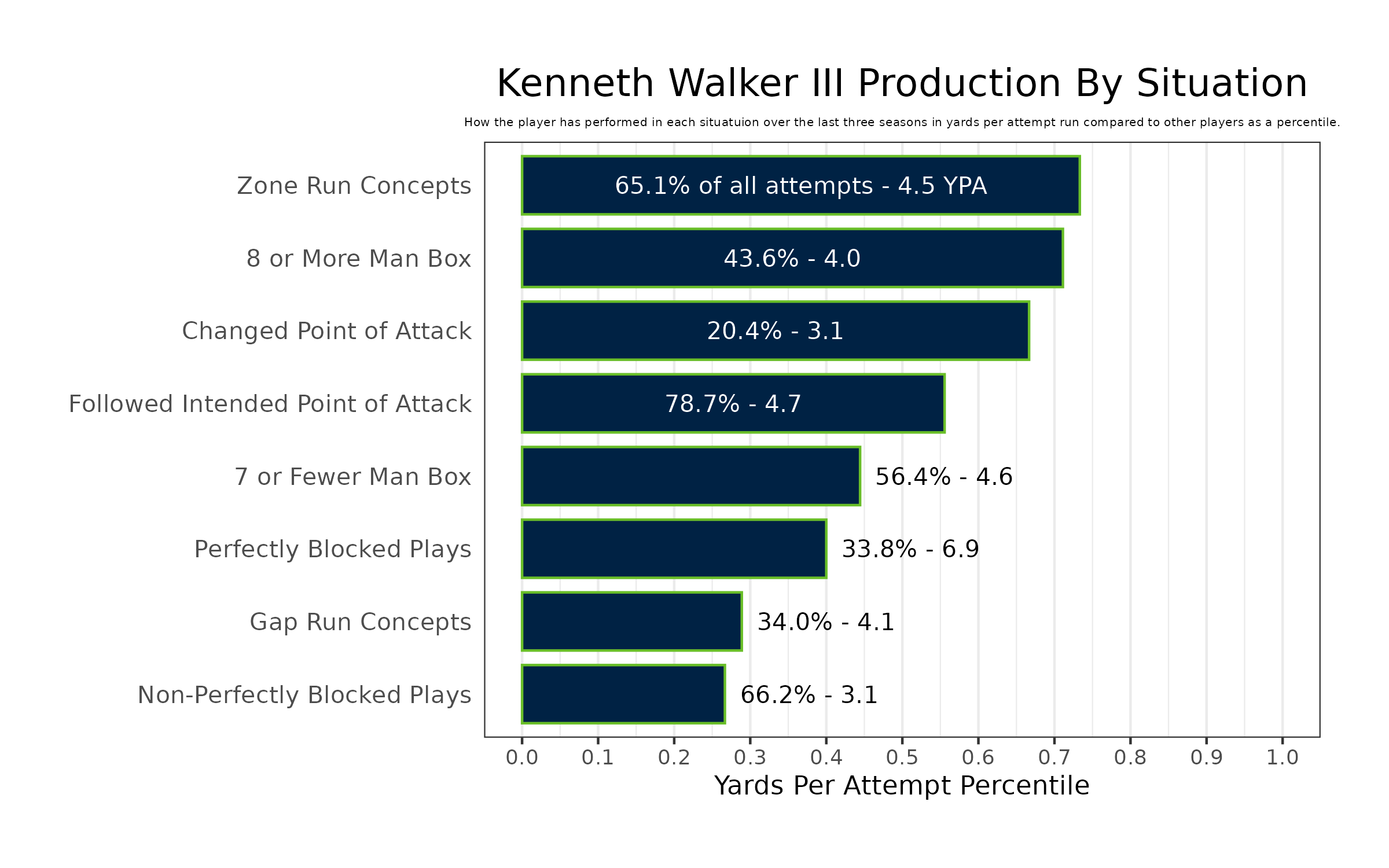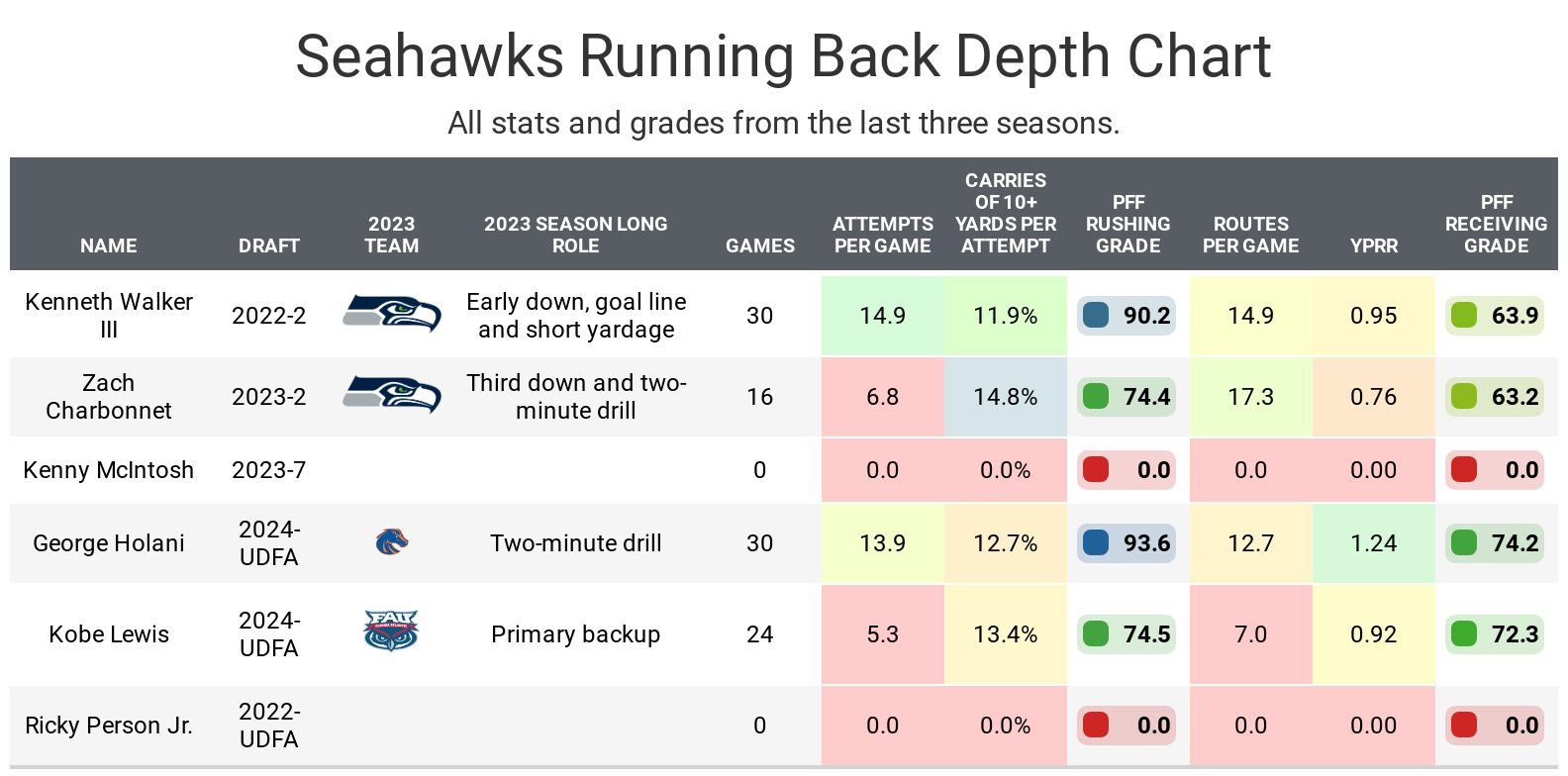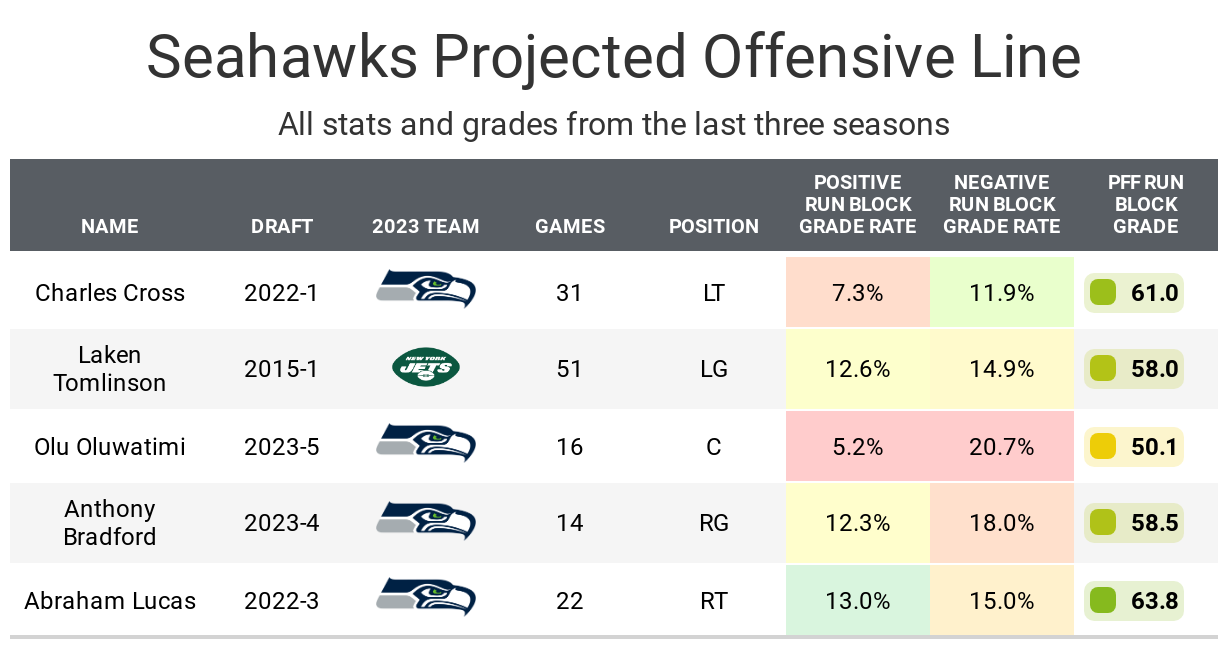• Kenneth Walker III is a highlight machine: No running back in the league receives a play-level grade of +1 or better in the run game as frequently as Walker.
• Walker’s role and efficiency could be reduced: The Seattle Seahawks lost multiple offensive linemen, and the team's new coaching staff could prefer Zach Charbonnet.
• Dominate fantasy football season with promo code PFF25: Unlock all of PFF's fantasy content and tools, including full access to the fantasy football mock draft simulator, for 25% off using promo code PFF25.
Estimated Reading Time: 5 minutes
The fantasy football player profile series gives the most in-depth view of a player using the best data points at PFF’s disposal. We will look at how well the player has performed, the player's competition for touches and how teammates and coaches will impact the player's performance.
Last updated: 5:00 a.m. Tuesday, July 30
Player Performance
Walker was the 41st overall pick in the 2022 NFL Draft. He won the starting job in Week 6. In his 11 starts, he ran for at least 97 yards in six but finished with 51 or fewer in the other five. His per-game stats weren’t great, as he had five games with eight or fewer carries due to being a backup or getting injured early. However, his per-carry stats were generally good, leading to a solid PFF rushing grade.
In 2023, his per-game stats were similarly not impressive because he was limited in several games due to injury. Despite this, his rushing grade remained very good, thanks to several excellent runs. Over the last two seasons, no running back in the league has earned a play-level grade of +1 or better at a higher rate, though Walker has also produced the third-lowest rate of +0.5 grades.
Walker hasn’t accomplished much as a receiver. He rarely plays on third downs. He also has a low target rate, and his efficiency on his targets hasn’t been great. He averages just under two receptions per game.



Competition for Touches
Walker has served as the primary early-down back for the last two seasons, also handling goal line and short yardage situations. His utilization rates are higher than is shown below when excluding games where he was either a backup or not at 100%.
His primary competition is from Zach Charbonnet, who took over the third-down and two-minute drill jobs last season. Both players are former second-round picks.
PFF's 2023 draft guide described Charbonnet as a potential bell cow, with route running being the one area needing improvement. So, Charbonnet could see more work on early downs than he did last season.


Impact of Teammates
The Seahawks have a new head coach in Mike Macdonald and a new offensive coordinator in Ryan Grubb.
This is Grubb's first season as an NFL offensive coordinator, making it difficult to predict how his offense will look. In college, his offense was generally pass-happy, which isn’t great news for Walker. The distribution of running back snaps is uncertain, but it’s assumed Walker will see most of the carries due to his role last year and his better rushing grade in the pros.
The Seahawks' offensive line has historically been a liability for Seattle runners. Last season, 10 different Seahawks offensive linemen played at least 100 snaps. The three best run blockers were Jason Peters, who hasn’t re-signed; Stone Forsythe, who is expected to be a backup due to his pass protection; and Jake Curhan, who was lost to the Chicago Bears in free agency.
Additionally, the Seahawks lost one of the best run-blocking tight ends, Will Dissly, in free agency. All of these losses will likely hurt Walker’s efficiency.

Bottom Line
Walker is a good runner with a lot working against him, including a new pass-happy offense, the potential of Zach Charbonnet cutting into his workload, and the loss of his top few run blockers.
He seems like a relatively safe pick, thanks to his ability to make big plays, but a lot could go wrong.

Footnotes
-
- The statistics for the tables and charts were generally chosen based on their ability to predict future fantasy performance (on either a per-game or per-occasion basis) or on their ability to describe the player relative to others at the same position.
-
- Opportunities for this purpose are defined by passing dropbacks, rushing attempts and routes run as a receiver.
-
- Numbers are either by season or based on the last three years. For rookies, only college numbers are included. Only NFL numbers are included for non-rookies, even if they played in college in the last three years.
-
- Because college competition is relatively easier than NFL competition, most rookies will likely see a decline in their numbers compared to their previous numbers.
-
- The colors for all tables in this article range from blue (good or high) to red (bad or low).
-
- All percentiles or colors compare the given player to other players with a high sample of opportunities. Generally, it’s one-third of the possible opportunities given the sample. If the player in question doesn’t have enough opportunities, they are still compared, even though a player could look good or bad on that small sample size, which might not be as predictive.
-
- Information on running back utilization classifications and importance can be found here, wide receiver here and tight end here.




 © 2025 PFF - all rights reserved.
© 2025 PFF - all rights reserved.